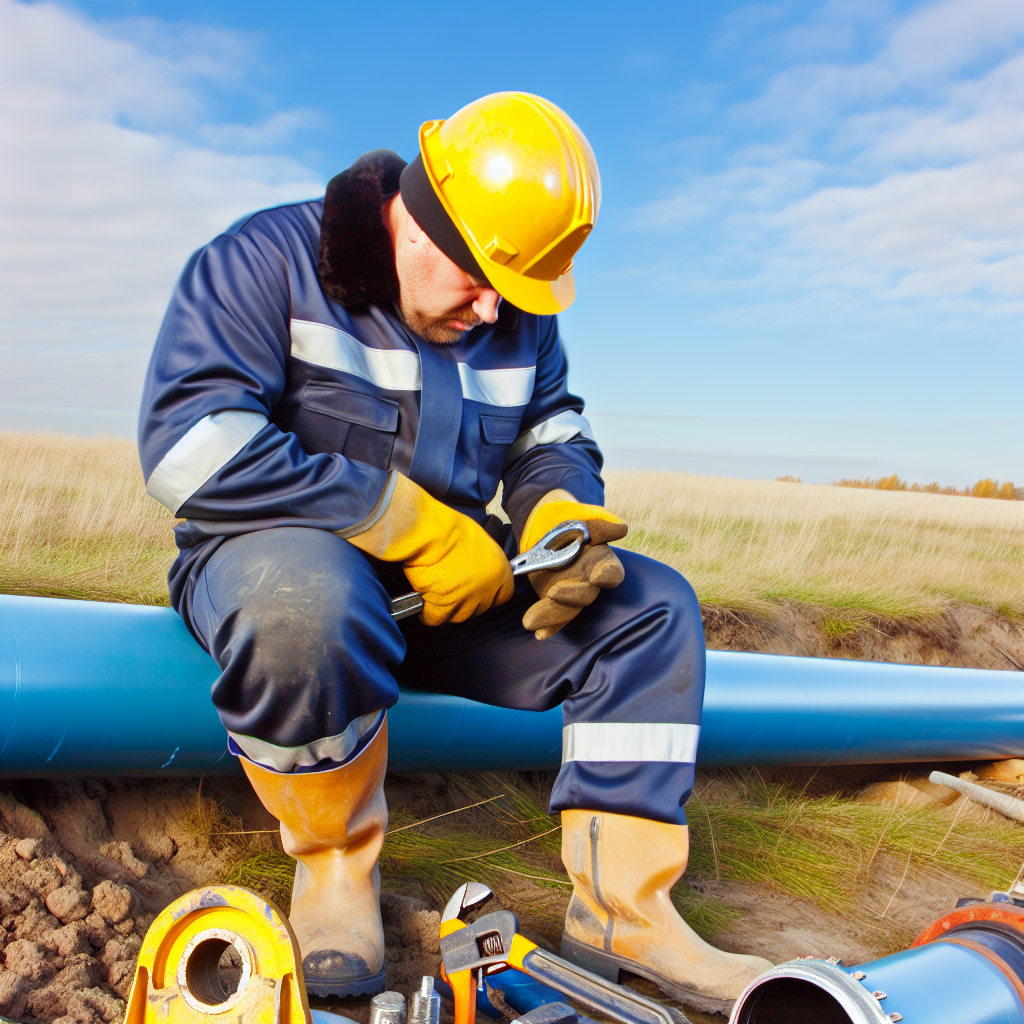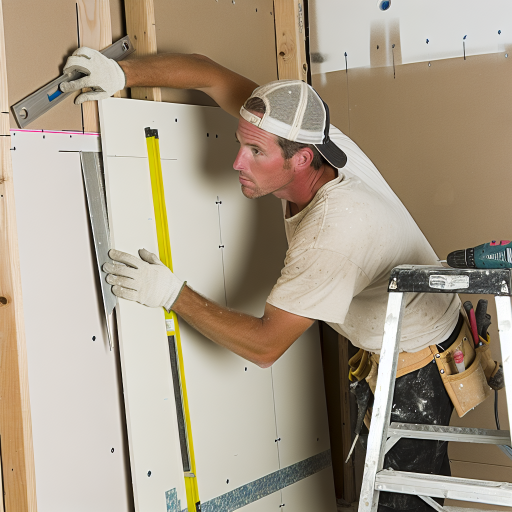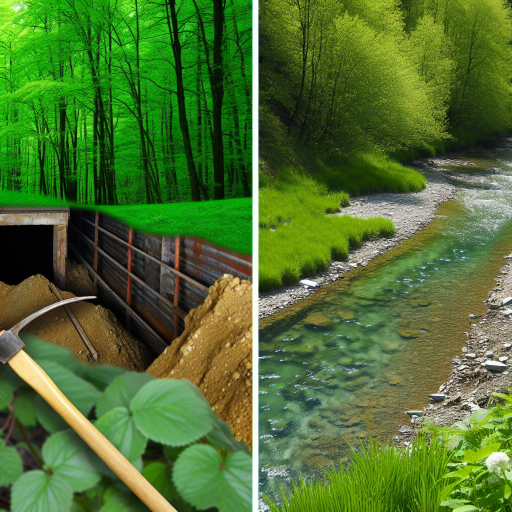Introduction
Becoming a certified pipelayer can open up numerous opportunities in the construction industry.
Overview of the role of a certified pipelayer
Certified pipelayers are responsible for installing and repairing pipelines for various utilities.
Importance of becoming certified in the field
Certification ensures that professionals meet industry standards, have necessary knowledge, and skills to perform tasks effectively.
Research and Choose a Reputable Training Program
When looking for a training program, it’s essential to choose one with a good reputation.
Seek out programs with experienced instructors and a strong track record of producing skilled pipelayers.
Consider factors like program length, cost, and location to find the best fit for your needs.
Research online reviews and testimonials from past students to get a sense of the program’s quality.
Review Eligibility Requirements for Enrolling in the Program
Before enrolling in a pipelayer training program, make sure you meet all eligibility requirements.
Common requirements may include a high school diploma or GED, driver’s license, and physical fitness.
Some programs may also require a background check or drug test before admission.
Be sure to carefully review and understand all the necessary prerequisites before applying.
Understand the Curriculum and Coursework Involved
Once you’ve chosen a training program and met the eligibility requirements, familiarize yourself with the curriculum.
Most pipelayer training programs cover topics like safety procedures, equipment operation, and pipe installation techniques.
Expect a combination of classroom instruction, hands-on training, and practical experience in the field.
Review the specific coursework and training schedule to ensure it aligns with your career goals and interests.
Complete the training program and gain hands-on experience
One of the essential steps to becoming a certified pipelayer is to complete a training program.
These programs are typically offered by technical schools or vocational training centers.
The training will provide you with the necessary knowledge and skills to succeed in this field.
During the training program, you will learn about piping materials, tools, and equipment used in pipelaying.
You will also study safety regulations and best practices to ensure a secure work environment for yourself and your colleagues.
Transform Your Career Today
Unlock a personalized career strategy that drives real results. Get tailored advice and a roadmap designed just for you.
Start NowAdditionally, hands-on experience is crucial for mastering the techniques involved in pipelaying.
You will have the opportunity to work on real projects and practice your skills under the guidance of experienced professionals.
Work alongside experienced pipelayers to learn the ropes
Working alongside experienced pipelayers is an excellent way to learn the ropes of the trade.
By observing and assisting seasoned professionals, you will gain valuable insights and practical knowledge that cannot be taught in a classroom setting.
As you work alongside experienced pipelayers, take the opportunity to ask questions and seek guidance.
This hands-on learning experience will help you understand the intricacies of the job and develop critical skills that are essential for success in this field.
Building strong relationships with experienced pipelayers can also open up new opportunities for mentorship and potential job offers in the future.
Networking within the industry is crucial for advancing your career as a certified pipelayer.
Obtain certifications and licenses required in the industry
In the field of pipelaying, obtaining certifications and licenses is a mandatory requirement to work professionally.
These credentials demonstrate your competence and adherence to industry standards, ensuring that you are qualified to perform the job safely and efficiently.
There are various certifications available for pipelayers, depending on the type of work you specialize in.
Some common certifications include the National Commission for the Certification of Crane Operators (NCCCO) and the Occupational Safety and Health Administration (OSHA) certification.
Additionally, you may need to obtain a state-issued license to work legally as a pipelayer.
Each state has its own licensing requirements, so be sure to research and fulfill all the necessary criteria to operate within the legal boundaries of your jurisdiction.
Gain More Insights: Groundskeeping for Commercial vs. Residential Properties
Networking with Professionals
Join industry-related associations and organizations.
Attend trade shows and exhibitions to meet experts.
Use social media platforms to connect with professionals.
Participate in online forums and discussion groups.
Build relationships through informational interviews.
Transform Your Career Today
Unlock a personalized career strategy that drives real results. Get tailored advice and a roadmap designed just for you.
Start NowIndustry Events and Conferences
Register for local and national events in pipeline construction.
Attend workshops and seminars to gain new insights.
Engage with speakers and panelists for industry knowledge.
Take advantage of networking opportunities during breaks.
Stay updated on the latest trends and technologies in the field.
Mentorship Opportunities
Approach experienced pipelayers for guidance and advice.
Seek out mentorship programs offered by organizations.
Shadow skilled professionals to learn hands-on techniques.
Ask questions and take feedback to improve your skills.
Utilize mentorship to enhance your overall knowledge and expertise.
By following these steps, you can increase your chances of becoming a certified pipelayer through continuous learning and networking in the industry.
Gain More Insights: Career Path: Becoming a Successful Drywall Installer
After completing the necessary education and training, there are several steps you can take to become a certified pipelayer.
Stay Updated on Industry Trends and Advancements
It is crucial to stay informed about the latest developments in the industry.
This can include new technologies, materials, and techniques that are being used in pipeline construction.
By staying updated on industry trends, you can ensure that your skills remain relevant and up-to-date.
Continue Professional Development through Workshops and Seminars
Attending workshops and seminars specific to pipeline construction can help you expand your knowledge and skills.
These events often provide hands-on training and networking opportunities that can be invaluable for your career development.
Look for workshops that cover topics such as safety regulations, equipment operation, and best practices in pipeline construction.
Consider Pursuing Additional Certifications to Stay Competitive in the Field
Having additional certifications can enhance your credibility as a pipelayer and make you more competitive in the job market.
Transform Your Career Today
Unlock a personalized career strategy that drives real results. Get tailored advice and a roadmap designed just for you.
Start NowConsider pursuing certifications such as the Pipeline Assessment and Certification Program (PACP) or the National Association of Sewer Service Companies (NASSCO) Pipeline Assessment Certification.
These certifications demonstrate your expertise and commitment to excellence in pipeline construction.
By following these steps and continuously seeking opportunities for professional growth and development, you can position yourself as a highly skilled and qualified certified pipelayer.
Keep learning, stay proactive, and strive for excellence in your work to achieve success in this dynamic and rewarding field.
Gain More Insights: How to Create Accent Walls with Bold Colors

Update resume and portfolio with relevant experience and certifications
When looking to become a certified pipelayer, it’s essential to showcase your skills and qualifications effectively.
Ensure your resume includes any relevant work experience in the construction or plumbing industry.
Highlight any certifications or training you have completed related to pipeline installation and maintenance.
Updating your portfolio with examples of your work can also help demonstrate your capabilities to potential employers.
Apply for job openings in the industry
Once you have updated your resume and portfolio, it’s time to start applying for job openings in the industry.
Look for positions that align with your skills and experience as a pipelayer.
Utilize online job boards, company websites, and recruitment agencies to find suitable opportunities.
Tailor your application to each job listing, highlighting how your qualifications make you a strong candidate for the position.
Prepare for interviews by showcasing expertise and passion for the field
Preparing for interviews is crucial when pursuing a career as a certified pipelayer.
Showcase your expertise by discussing your experience in pipeline installation and maintenance.
Share details about any certifications or training you have completed to demonstrate your commitment to the field.
Express your passion for the work and your eagerness to learn and grow within the industry.
Practice answering common interview questions, and be prepared to discuss specific projects you have worked on that showcase your skills as a pipelayer.
Find Out More: Safety Tips for Painters: Protecting Yourself on the Job
Once you have accepted a job offer as a certified pipelayer, it’s time to begin your journey into this specialized field.
Transform Your Career Today
Unlock a personalized career strategy that drives real results. Get tailored advice and a roadmap designed just for you.
Start NowHere is a step-by-step guide to help you navigate the path towards becoming a certified pipelayer:
On-the-Job Training
- Accept the job offer and start working as a certified pipelayer.
- Gain hands-on experience by working alongside experienced professionals.
- Learn about different types of pipelines, materials, and construction techniques.
Continuous Learning
- Continue learning on the job and seek opportunities for growth.
- Participate in training programs offered by your employer or industry organizations.
- Stay up-to-date on the latest trends and technologies in pipeline construction.
Commitment to Safety
- Stay committed to safety practices and quality work.
- Follow all safety protocols and procedures to prevent accidents and injuries.
- Use personal protective equipment (PPE) at all times while on the job site.
As a certified pipelayer, it’s essential to focus on honing your skills, staying informed about industry best practices, and prioritizing safety in all your work.
By following these steps and continuously seeking opportunities for professional development, you can establish yourself as a skilled and knowledgeable pipelayer in the industry.
Steps to Become a Certified Pipelayer
Begin by obtaining a high school diploma or GED.
Consider enrolling in a trade school or apprenticeship program.
Gain hands-on experience working with experienced pipelayers.
Pass any required certification exams or assessments.
Keep up with industry trends and advancements through continuing education.
Pursuing a Career in Pipelaying
If you have a passion for construction and enjoy working with your hands, pursuing a career as a certified pipelayer can be a rewarding and fulfilling path.
By taking the necessary steps and staying dedicated to your craft, you can thrive in this challenging yet exciting industry.
Don’t be afraid to follow your dreams and work towards becoming the best pipelayer you can be.
Good luck on your journey!
Additional Resources
Davis-Bacon and Related Acts (DBRA) Frequently Asked Questions …




